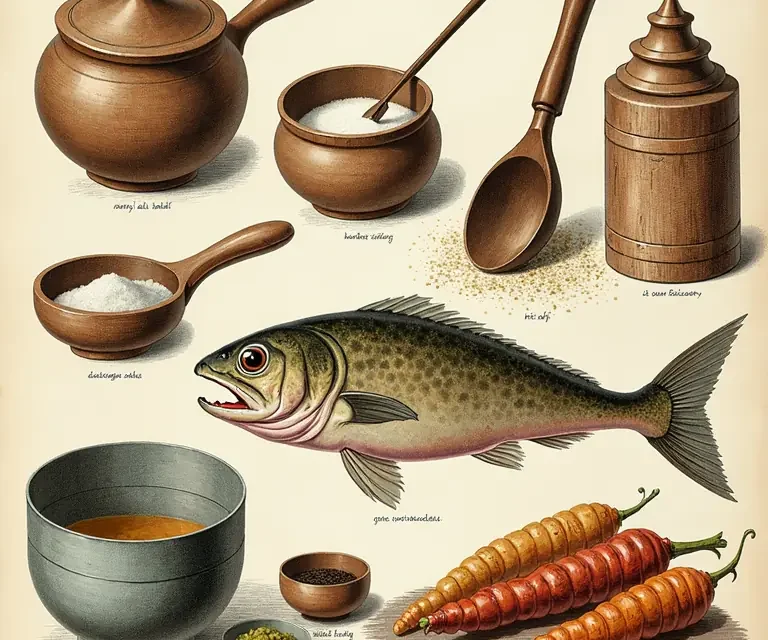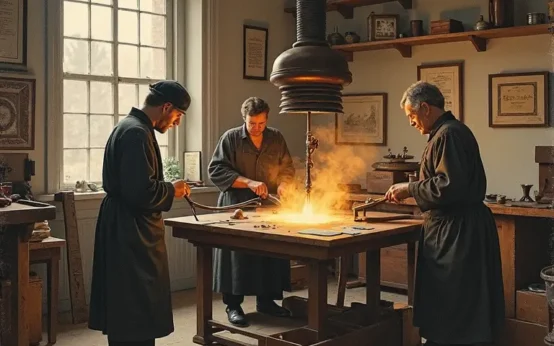For millennia, humans have faced a fundamental challenge: ensuring a reliable food supply. Unlike modern grocery stores with their year-round abundance, our ancestors lived with the stark realities of seasonality. Feasting during harvest meant careful preparation for lean times. This necessity spurred incredible ingenuity, leading to a surprisingly consistent application of scientific principles – often discovered through trial and error – to preserve food. What appears as quaint tradition is, in many cases, a remarkably effective application of microbiology, chemistry, and physics, predating formal scientific understanding by centuries. This article explores the fascinating history of food preservation, revealing the underlying science that has sustained civilizations and continues to influence our practices today.
The Core Principles: A Battle Against Spoilage
Food spoilage isn’t simply about something *looking* bad; it’s about biological processes at work. Microorganisms – bacteria, yeasts, and molds – are the primary culprits. These organisms thrive in environments with readily available nutrients, moisture, and suitable temperatures. They consume the food, producing waste products that cause undesirable changes in flavor, texture, and appearance, and sometimes, dangerous toxins. Historically, preservation methods aimed to control these factors: eliminating microorganisms, slowing their growth, or making the environment inhospitable to them.
Dehydration: The Ancient Art of Removing Moisture
Perhaps the oldest and most widespread preservation technique is dehydration. Removing water inhibits microbial growth, as microorganisms require water to flourish. Sun-drying fruits, vegetables, and meats was practiced in ancient Egypt, the Mediterranean region, and across the Americas. The process relies on simple physics: evaporation. Exposure to sun and wind lowers the water activity (the amount of unbound water available for microbial growth) to a level where spoilage is significantly slowed. Different cultures developed specialized techniques – raised platforms to improve airflow, strategic placement to maximize sun exposure, and even the use of artificial heat sources like fires for smoke-drying. Think of stockfish, a traditional Norwegian food, or biltong in South Africa; these are prime examples of dehydration’s enduring legacy.
Salting: A Chemical Shield Against Decay
Salt, or sodium chloride, is another ancient preservative. Its effectiveness stems from multiple mechanisms. Firstly, salt draws water out of food (osmosis), reducing water activity. Secondly, high salt concentrations create a hypertonic environment, meaning the salt concentration is higher outside the microbial cells than inside. This causes water to flow *out* of the cells, effectively dehydrating and killing them. Thirdly, salt inhibits the activity of many enzymes that contribute to spoilage. The Romans relied heavily on salted fish (garum being a famous example), and salted meats were crucial for long voyages. The practice continues today in bacon, ham, and many cured fish products. The concentration of salt is critical; too little and it won’t be effective, too much and the food becomes unpalatable.
Smoking: Combining Dehydration and Chemical Preservatives
Smoking is a more complex preservation method, combining dehydration with the addition of chemical compounds from the wood smoke. The smoke contains phenols, formaldehyde, and other substances that possess antimicrobial and antioxidant properties. These compounds deposit on the surface of the food, inhibiting microbial growth and slowing oxidation (which causes rancidity). Like salting, smoking also contributes to flavor development, often providing a desirable smoky aroma and taste. Different types of wood impart different flavor profiles – hickory, mesquite, applewood, and alder are all commonly used. Smoked salmon, sausages, and cheeses are all testament to the enduring appeal of this method.
Fermentation: Harnessing the Power of ‘Good’ Microbes
Fermentation is a unique preservation technique that doesn’t necessarily *kill* all microorganisms; instead, it encourages the growth of beneficial microbes – bacteria, yeasts, or fungi – that outcompete spoilage organisms and produce desirable changes in the food. Lactic acid fermentation, for instance, is used to make yogurt, sauerkraut, kimchi, and pickles. The lactic acid produced lowers the pH, creating an acidic environment that inhibits the growth of many harmful bacteria. Alcoholic fermentation, utilized in winemaking and beer brewing, produces ethanol, which also acts as a preservative. Fermentation not only preserves food but also often enhances its nutritional value and digestibility. It’s a fascinating example of working *with* nature rather than against it.
Regional Variations and Ingenious Adaptations
While the core principles of food preservation remained consistent, different cultures developed ingenious adaptations based on their local climates, available resources, and culinary traditions.
The Arctic and Subarctic: Fermented Fish and Frozen Stores
In the harsh climates of the Arctic and subarctic regions, freezing was a natural preservative. Food could be stored in ice cellars or simply buried in the snow. However, freezing alone doesn’t always prevent spoilage; it merely slows it down. Therefore, indigenous peoples often combined freezing with fermentation. Fermented fish, like kiviak (fermented auk buried in seal skin), represents a remarkable – and admittedly acquired – taste. The fermentation process helps to preserve the fish during the long winter months.
The Mediterranean: Oil and Vinegar Pickling
The Mediterranean region, with its abundance of olive oil and vinegar, developed extensive pickling traditions. Submerging food in oil or vinegar creates an anaerobic environment (lacking oxygen), inhibiting the growth of many spoilage organisms. The acidity of vinegar further contributes to preservation. Pickled olives, vegetables, and fish were staples of the Mediterranean diet. The practice also imparted unique flavors, making pickled foods highly valued.
The Andes: Freeze-Drying with Altitude
The Incas of the Andes Mountains mastered a sophisticated form of freeze-drying. They took advantage of the high altitude and freezing temperatures to rapidly freeze food, then exposed it to the sun and wind, causing the ice to sublimate (transition directly from solid to gas) without melting. This process resulted in a lightweight, shelf-stable product called chuño, made from potatoes. Chuño could be stored for years and provided a crucial food source during times of scarcity.
Spices: More Than Just Flavor
The historical importance of spices extends far beyond simply enhancing flavor. Many spices possess antimicrobial properties. Cinnamon, cloves, garlic, and turmeric, for example, contain compounds that inhibit the growth of bacteria and fungi. While spices were often expensive and used sparingly, their inclusion in food served a practical preservation function, especially in warmer climates where spoilage rates were higher. The spice trade wasn’t solely driven by a desire for culinary delight; it was also a quest for food security.
The use of spices also highlights the interconnectedness of ancient cultures. The demand for spices fueled exploration and trade routes, leading to the exchange of not only goods but also ideas and knowledge. This cross-cultural exchange played a vital role in the evolution of food preservation techniques.
The Transition to Modern Preservation
The 19th and 20th centuries witnessed a revolution in food preservation, driven by scientific advancements. Nicolas Appert’s development of canning in the early 1800s – heating food in sealed containers – marked a turning point. This process, later understood to kill microorganisms through heat sterilization, allowed for the long-term preservation of a wide range of foods. Louis Pasteur’s work on pasteurization – heating liquids to kill harmful bacteria – further refined preservation techniques. Refrigeration and freezing, made possible by advancements in thermodynamics and engineering, provided even more effective methods for slowing microbial growth.
Despite these modern innovations, many traditional preservation methods continue to be practiced today, often for their unique flavor profiles or cultural significance. Fermentation, in particular, has experienced a resurgence in popularity as people seek out probiotic-rich foods.
The Enduring Lessons of the Past
The history of food preservation is a testament to human ingenuity and adaptability. Our ancestors, facing the challenges of food scarcity, developed remarkably effective techniques based on keen observation and a deep understanding of the natural world. While we now have access to sophisticated technologies, the underlying principles remain the same: controlling moisture, inhibiting microbial growth, and slowing down chemical reactions. By studying these historical practices, we can gain a greater appreciation for the science of food preservation and its crucial role in sustaining human civilization.
Exploring the logic behind historical practices can often reveal surprising consistencies across seemingly disparate fields. For example, considering the careful planning required for food preservation can be compared to the organized social structures found in ancient boarding houses – a similar need for order and long-term planning. You can read more about this in the surprisingly consistent logic of ancient boarding-house rules. Similarly, the precision needed in timing fermentation processes echoes the development of accurate timekeeping devices, detailed in the surprisingly consistent evolution of clockmaking. The attention to detail in selecting materials for preservation, like specific clays for fermentation vessels, resonates with the careful pigment choices in ancient pottery, discussed in the surprisingly consistent use of color in ancient pottery. And just as early preservationists sought clarity in extending food’s lifespan, vintage camera lens makers pursued optical clarity, as explored in the surprisingly consistent science of vintage camera lenses. Finally, the ability to predict optimal harvesting times based on weather patterns aligns with the consistent wisdom found in traditional weather proverbs, outlined in the surprisingly consistent logic of traditional weather proverbs.


 The Curious Acoustics of Historical Echo Chambers: Resonance, Ritual, and Revelation
The Curious Acoustics of Historical Echo Chambers: Resonance, Ritual, and Revelation  The Curious Cartography of Scent: Mapping Perfume Ingredients Through History
The Curious Cartography of Scent: Mapping Perfume Ingredients Through History  The Curious Lexicon of Lost Trades
The Curious Lexicon of Lost Trades  The Surprisingly Consistent Science of Historical Ice Harvesting – A Frozen History of Commerce & Preservation
The Surprisingly Consistent Science of Historical Ice Harvesting – A Frozen History of Commerce & Preservation  The Unexpectedly Consistent Science of Historical Buttonhooks – Fashion, Function & Forgotten Tools
The Unexpectedly Consistent Science of Historical Buttonhooks – Fashion, Function & Forgotten Tools  The Surprisingly Consistent Science of Historical Toy Soldiers – Miniature Warfare, Materials & Collective Play
The Surprisingly Consistent Science of Historical Toy Soldiers – Miniature Warfare, Materials & Collective Play